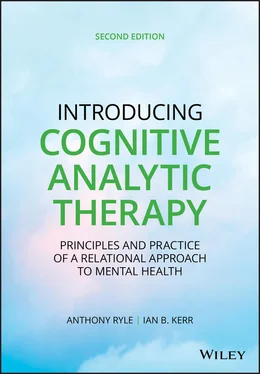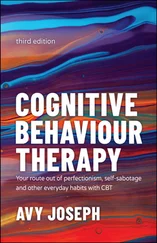But the implications of possible inherited characteristics for psychotherapy are considerable since they imply that a certain amount of what may be described as personality may be the effects of temperament rather than of developmental experience. As such they may be relatively immutable, raising the question of whether, in that case, the task of psychotherapy may be, in part, to help an individual to live with and manage their particular temperamental characteristics as well as to make sense of their consequences. This would apply also to those with established and disabling disorders (such as psychosis or anorexia) whatever their, possibly complex, origins The effects of temperament are rarely direct and will, importantly, include the complex effects whereby the behavior of a child will actually modify the responses of others and so their experience (Plomin, 1994, 2018), which will then, in turn, be internalized. These effects would also include the consequences of differing experiences within a group of siblings. Thus, a demandingly aggressive or a highly anxious child will elicit very different responses from a parent or siblings and peers compared to a more placid sibling. This mechanism (“non‐shared family environment”) accounts in part for the very different developmental experience which siblings may have within the same family. It should be noted also that certain temperamental characteristics may confer a degree of developmental resilience in whatever conditions a child develops, while others may do very well indeed but only in certain favorable conditions, the so‐called “dandelion–orchid” hypothesis (see review by Kennedy, 2013).
These inherited characteristics may be usefully conceived of overall in terms of “vulnerability” and “resilience” factors (Plomin, 1994, 2018; Rutter et al., 1997 and see Figure 4.1), although it does seem that some factors could operate as one or the other depending on circumstances. But importantly, too, given understandings from recent developmental psychology and the social formation of the self, it is clear that much of what is called currently called resilience represents in fact the internalization of developmental social context (and its health), and experience of social context subsequently throughout life. But it can be seen that an increased predisposition to anxiety (broadly speaking “neuroticism” in terms in the “big 5”) could compound the damaging effects of growing up in an abusive family resulting in a severely damaged self. However, lack of anxiety in another dangerous setting, such as a primitive jungle or a modern motorway, could result in disastrous consequences. Similarly, a degree of temperamental disinhibition or elevated mood could be invaluable in a creative artist or business entrepreneur, but in a chronically stressful, unsupported setting could result in overt manic depression in someone so predisposed. It is probable that hitherto unclear protective psychological factors exist in the face of otherwise damaging adversity and trauma. It is not yet clear, however, how far such factors may be innate and how far affected by developmental deprivation or damage. Genetic variability may, for example, partially account for a tendency to dissociation in the face of trauma (Corrigan & Hull, 2018; Liotti et al., 2008; Silk, 2000). This may also have been evolutionarily adaptive in the face of overwhelming anxiety or stress, but if chronically and excessively endured during a traumatic childhood may have catastrophic effects on the developing Self (see also Chapter 4). It has also been suggested that individuals with a predisposition to obsessional or perfectionistic behavior are more vulnerable to developing disorders such as anorexia. Although these factors are not the immediate focus of psychotherapy, we suggest that it is important to bear them in mind and also to acknowledge them as appropriate in reformulations, especially given a common psychotherapeutic tendency to attribute difficulties or psychopathology entirely to an individual's developmental history and to think that personality is malleable and “mendable” in all cases.
Natural selection apparently favored individuals who were biologically endowed with the potential to be socially formed and responsive and who were therefore capable of living in groups and able to adjust flexibly to a wide variety of physical circumstances and social structures. There is an increasingly large, although at times rather contradictory and acrimonious, literature on the acknowledged effects of our evolutionary inheritance on our mental functions, making sense of which is still challenging (Barrett & Dunbar, 2007; Buss, 2005; Donald, 1991; Evans & Zarate, 1999; Gilbert, 1992; McGuire & Troisi, 1998; Nesse, 2005; Plotkin, 1997; Rose & Rose, 2000; Slavin & Kriegman, 1992; Stevens & Price, 1996; Tooby & Cosmides, 1992). Since we are, in evolutionary terms, simply another product of that process, it is accepted increasingly that we carry within us certain evolutionarily more “primitive” although originally adaptive predispositions to behave in certain ways at certain times and in certain circumstances. However, unlike “lower” order species whose activities may be determined almost exclusively by stimulus‐evoked, “all or nothing,” instinctual patterns, our species is characterized by a remarkable capacity, consequent to the development of our expanded frontal cerebral cortex (Innocenti & Kaas, 1995), to reflect upon and modify such patterns and to be influenced by socio‐cultural formation and context. In addition, our evolutionary development has given us the potential to acquire a capacity for intersubjectivity and an extraordinary ability, acquired through the process of socially meaningful, joint, and reciprocal interactions, to “read” or “be in” the minds of others. It has been suggested that this ability enabled our ancestors to exist effectively and advantageously in large groups, which have, for some time, been our “Environment of Evolutionary Adaptedness” (see Evans and Zarate; Buss, 2005; Dunbar and Barrett, 2007). It is suggested that the ability to understand each other's minds and motives has been and continues to be of critical importance for our species and is reflected in our preoccupation with social intercourse and communication—including our predilection for gossip! More seriously, this also implies that whatever meaning or fulfillment there is in our lives is fundamentally social, an understanding, in our view, with important implications for both psychotherapy and politics. Most evolutionary psychologists, however, in common with even more recent psychodynamic theorists, propose an understanding of mind and self that is characterized by a cognitive, or at best an intersubjective, monadism. In this formulation, interpersonal experience is seen as “mapped” or “represented” within fundamentally individual, pre‐existing mental structures. Curiously, this very Western view of the self would almost certainly be incomprehensible to most members of traditional or “primitive” societies. In this respect, the CAT model may well have something important to contribute to a dialog with evolutionary psychology.
These various features of our evolutionary inheritance, in particular our capacity to be shaped by developmental experience and the internalization of social meanings and cultural values, have largely contributed to the historic conceptual conflict between the protagonists of the effects of “nature” and “nurture” or of genes versus environment. This “for or against” argument should, by now, be essentially redundant. As Plomin (1994) has remarked, the “nature–nurture” debate is centered nowadays around the hyphen and around its developmental, synthetic interactions. And as we (AR) have previously noted, notwithstanding our various predispositions, “humans are above all biologically predisposed to be social formed.”
Читать дальше












